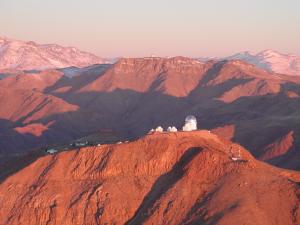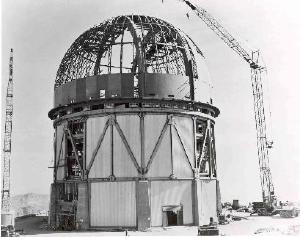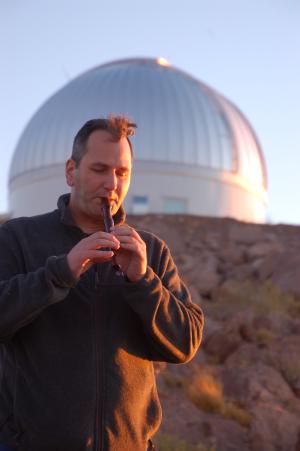Blog
The Chile Project
7 September 2015
 NOAO/AURA/NSF
NOAO/AURA/NSFBefore the 1960s, most major telescopes were in the northern hemisphere. The southern observatories that existed at the time were built more for convenience of access than clarity of skies. This was unfortunate since there are lots of wonderful objects in the southern sky such as the Magellanic clouds and Carina region of the Milky Way. So in 1962 it was decided to build a modern observatory on Cerro Tololo. It was to become the Cerro Tololo Inter-American Observatory (CTIO), but was often referred to as the “Chile Project.”
 CTIO
CTIOIn order to protect the region from development, 30,000 hectares (74,000 acres) of land surrounding Cerro Tololo were purchased for the project. Given its remoteness, an entire infrastructure had to be developed there, including water and electrical power. The original plan for the site was to build a 1.5 meter telescope, but by the 1970s construction began on a 4-meter telescope. This became the flagship telescope on Cerro Tololo, and was named in honor of Victor Blanco in 1995. Blanco was the second director of CTIO, and was crucial to its establishment as a leading southern observatory.
 Jim O’Leary
Jim O’LearyOver the years other smaller telescopes have been installed on Tololo, and the Blanco 4-meter has been upgraded. Most recently the 520 megapixel camera array known as Dark Energy Camera was installed in 2012 as part of the Dark Energy Survey. The project studies dark energy through supernovae, baryon acoustic oscillation, and gravitational lensing.
Although there’s no more room for large telescopes on Cerro Tololo, there is room on other hills within the 30,000 hectares of CTIO. Most of the new construction focuses on Cerro Pachón, where the Southern Astrophysical Research telescope (SOAR) and Gemini South are located, and where Large Synoptic Survey Telescope (LSST) is under construction.
It looks like the Chile Project is likely to continue to grow for quite some time.